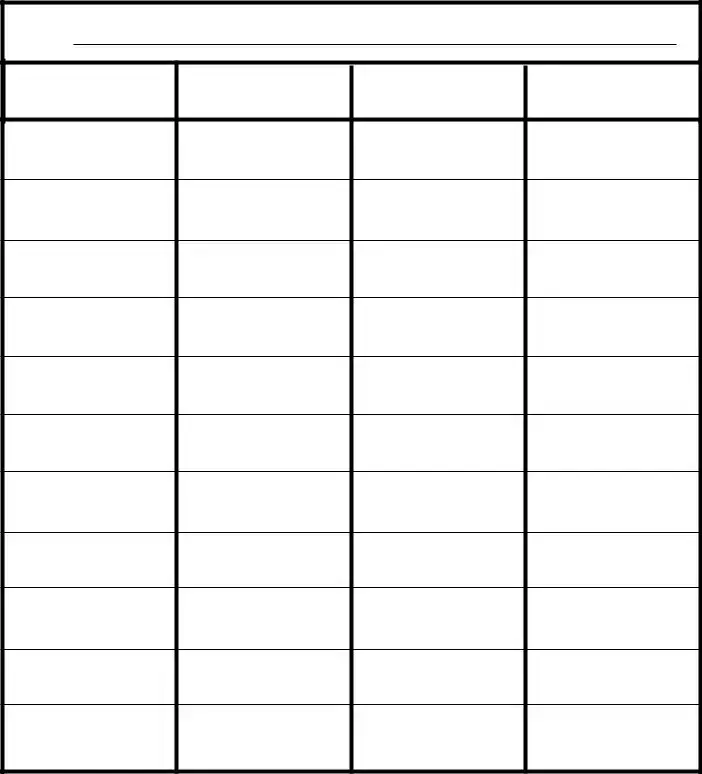The process of filling out the Four Column Chart form may seem straightforward, yet many individuals make common errors that can lead to confusion or incomplete submissions. One prevalent mistake occurs when users neglect to adequately label the columns. Each column should have a clear and descriptive heading that defines the type of information being collected. Without proper labels, the reader may struggle to understand the context or intent of the data presented.
Another frequent error involves the inconsistent input of details in each column. Participants might inadvertently leave one or more columns blank while focusing on others. This inconsistency can undermine the purpose of the chart, which is to present a comprehensive view of the topic. Ensuring that all columns contain relevant information is essential for creating a useful and informative chart.
People also often fail to stay focused on the main topic when providing details. For example, when discussing the Mifflin Company, contributors might include unrelated information or stray from the central theme. Staying on topic ensures that the chart remains relevant and serves its intended purpose. Therefore, it is vital to keep responses aligned with the headings defined for each respective column.
In addition to content relevance, formatting issues frequently arise. Users may overlook the need for uniformity in data presentation. For instance, using different fonts, sizes, or styles within one column can create chaos and distract from the information being conveyed. A professional appearance is critical for facilitating comprehension and maintaining reader engagement.
Finally, many forget to review their completed chart before submission. This final step is important to catch errors, such as typos or mislabeling. Taking a moment to double-check the work enhances the overall quality of the document and ensures that the details provided are accurate and clear. With these considerations in mind, filling out the Four Column Chart can be completed effectively, enabling clear communication of ideas.

